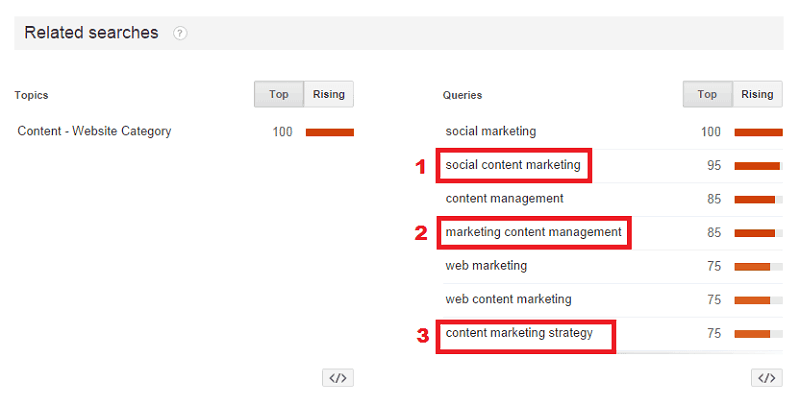Content ideas (or rather, the lack of them), can be the bane of your content marketing campaign‘s existence. After all, once you go beyond a certain point in your content campaign, you’ve pretty much covered everything there is to know about your industry, right?
Wrong.
There are always, always, always more topics for you to create content around. I mean, think about it. Sites like Mashable, Lifehacker, and ProBlogger have been around for years and years — but you don’t see them complaining about a lack of article topics. Instead, they’re regularly pumping fresh posts to this day.
So, how do they do it? Are the strategists behind these content networks magicians, sorcerers, or just plain geniuses?
None of the above (although that last one is debatable). These people have never-dry wells of content ideas for a very good reason: organization.
Successful, prolific content marketers are ones who are organized. Not only do they plan their editorial calendar miles in advance, but they also have established, effective strategies for doing everything, including generating ideas for their content marketing strategy.
There are a few different ways to brainstorm content ideas. Some of them involve the use of web-based tools and software. In this post, I’d like to introduce to you 5 tried-and-true ways to conjure up subject matter ideas for your next pieces of content (no paid tools necessary).
1. Google Trends
Google’s known for a lot of things: Gmail, Blogspot, Analytics, Adsense, and most of all their search engine. But one of their less popular (but no less valuable) products is Google Trends.
For content marketers in search of new content ideas, Trends is an absolute goldmine. One simple search can bring a plethora of new potential topics to your attention.
Let’s say, for instance, that I run a blog about content marketing and I’m looking for new content ideas. I simply key in the keyword “content marketing” as a search term into the bar, scroll down to the related searches area down at the very bottom, and voila! A set of new ideas.

Here are 3 prime topics that I can spin off for new blog posts. For instance — from the “social content marketing” search query, I could write a post on the relationship between social media and a specific content marketing tactic, like blogging. For the second search query: a post on the stresses and responsibilities involved in managing a content campaign. The third: an in-depth guide on how to develop a content marketing strategy from scratch.
All terrific ideas with huge traffic potential.
2. Keyword Research
In the onpage SEO strategies of 2010 and earlier, when marketers would scramble to conform to a specific keyword density and would italicize, bold, or otherwise format keywords they were looking to rank for on a webpage, keyword research was a big, big deal. It was important to know the exact competition, traffic potential, and search metrics of a keyword before crafting a piece of content around it.
Nowadays? You’ll be lucky to get one or two snickers around the room when you mention the term.
While keyword research may or may not be a crucial part of SEO strategy today, one thing is for sure: the tools one normally uses for keyword research are fantastic to generate content ideas. Why?
Because with most tools, every time you run a keyword through to check up on its metrics, you’re also presented with a slew of related search queries, plus LSI keywords (read up on this SEJ article if you haven’t heard of LSI before), which serve double duty as new ideas for blog posts, guides, and infographics for your content marketing campaign.
A few of the most popular free keyword research tools are:
- Google Keyword Planner (yep, Google’s got something for this too!)
- WordTracker (great UI — two second start)
- UberSuggest (PERFECT for finding those long tail keywords)
3. “Borrow” from Competitors
Alright, fine, I confess: you’re not borrowing, you’re stealing.
What?
Hold on, not that kind of stealing. We aren’t talking about corporate espionage here.
This is a nifty content idea generation strategy that involves you researching a popular blog post written by a competitor, then writing another blog post on the same topic (or a slight variation) that goes above and beyond what your competitor produced.
Want a bit more explanation? You got it:
Go hit up one of your competitor’s websites. Entrepreneur.com, for instance, is a classy competitor of Foundr’s. Its target audience and general goals might be a little off from Foundr’s, but it will still serve as a good example.
Right on their front page, I see a list of the 5 most popular posts on their blog today, in terms of social media shares (interesting note — nearly all of the popular posts are on productivity. No prizes for guessing what topic’s hot right now in the entrepreneurship niche). I pick a title that I like and read the post — the one on morning rituals, for example.

I then go and write a post on my blog on the same topic (with a changed headline that’s more clickable and more targeted towards my desired audience). The only difference is, my post is wayyy cooler and much more comprehensive (it discusses 25 productive rituals instead of just 5).
I publish it, and drive loads of targeted traffic.
Everybody wins. You win because you’re able to drive traffic to a post on a topic that you already know resonates well with your audience. Readers win because they get an awesome blog post to read. Entrepreneur.com wins because … okay, I lied, not everybody wins. Entrepreneur.com doesn’t win, but isn’t that kind of the point?
Remember to stay clean with this tactic. Never, EVER duplicate someone else’s content or copy their post outline. Not only is it unethical, but it can backfire on your brand if readers notice the copying.
4. Identify Key Attributes of Your Buyer Persona
If your business is already up and running, you need a buyer persona. No ifs, no buts, no excuses.
You. Need. BP (we’re talking buyer persona here, but blood pressure is a good thing to have as well).
I just can’t emphasize the importance of creating an ideal customer profile enough, because it’s on this profile that you base your entire marketing campaign (content, social, online, offline, everything). If you haven’t got one yet, then get to work creating one right now (well, try to finish reading this post first).
Your buyer persona should include a key attributes section, where you identify crucial, particular characteristics that your ideal buyer usually has. These attributes could be pain points (something that’s an annoyance to them), or something they love doing or having.
You can create content around these attributes, e.g. a blog post on how your customers can get more of that thing they love so much, or a guide on how they can solve one of their pain points. The possibilities are literally endless.
5. Mind Mapping
Your brain is one busy place. It has 100 billion neurons that can fire up to 50 synapses in one second, equivalent to a trillion bit-per-second processor. A significant chunk of those synapses will be dedicated to your thinking process.
When you make mind maps, you’re able to get at least some of that quick thinking down on paper.
What’s more, mind maps force your brain to continually think both broader and more specific as you hop from one idea to the next. As your mind hops and tries to connect relationships between two bubbles on the map, a new idea is formed.
Sometimes, that idea is a spectacular topic for your next blog post.
If you’re tech-savvy and prefer to do your mind mapping with a keyword and screen instead of a paper and pen, check out a few of these nifty free mind mapping tools:
You’re Never Stuck
The next time you’re stuck for new content ideas, know this:
You aren’t stuck. You can never be stuck. Know why?
Because with a full suite of these idea generation strategies at your disposal, there is no way on earth that you could ever run out of ideas. Seriously. Come back after a few hundred years of blogging, and I’ll still point out to you topics in your niche that you haven’t yet covered, using any one of these 5 powerful tactics.
If you liked this post (or even if you didn’t), don’t forget to share it with your entrepreneur buddies and leave us a comment on what you thought of it!
















